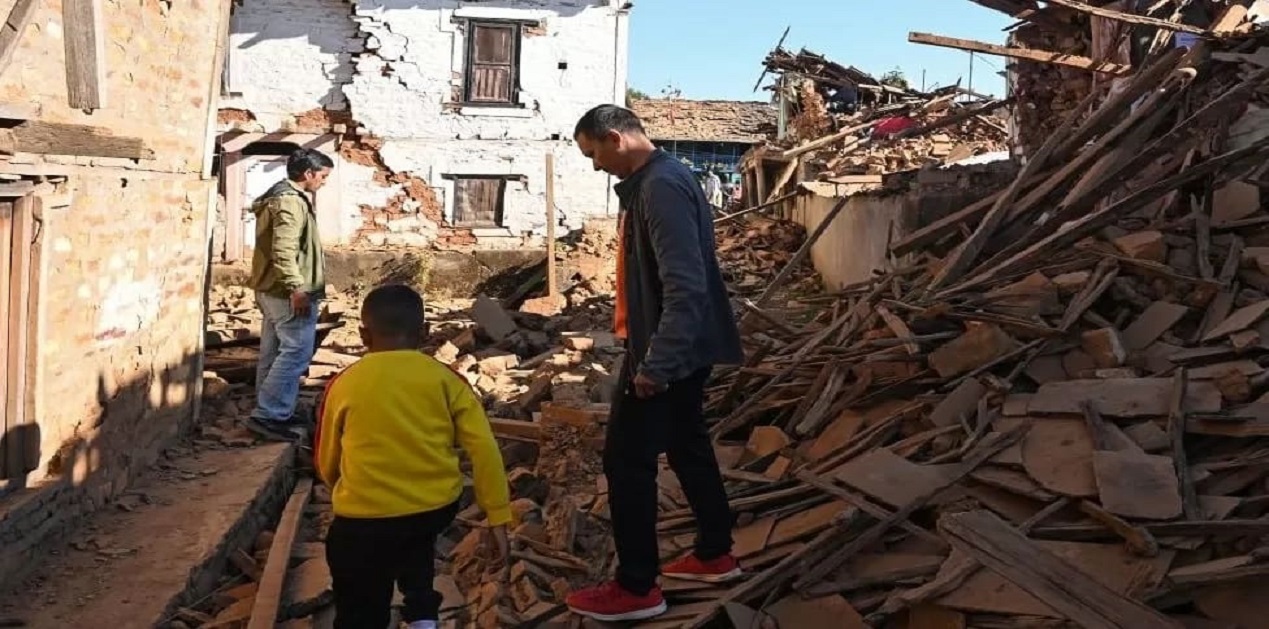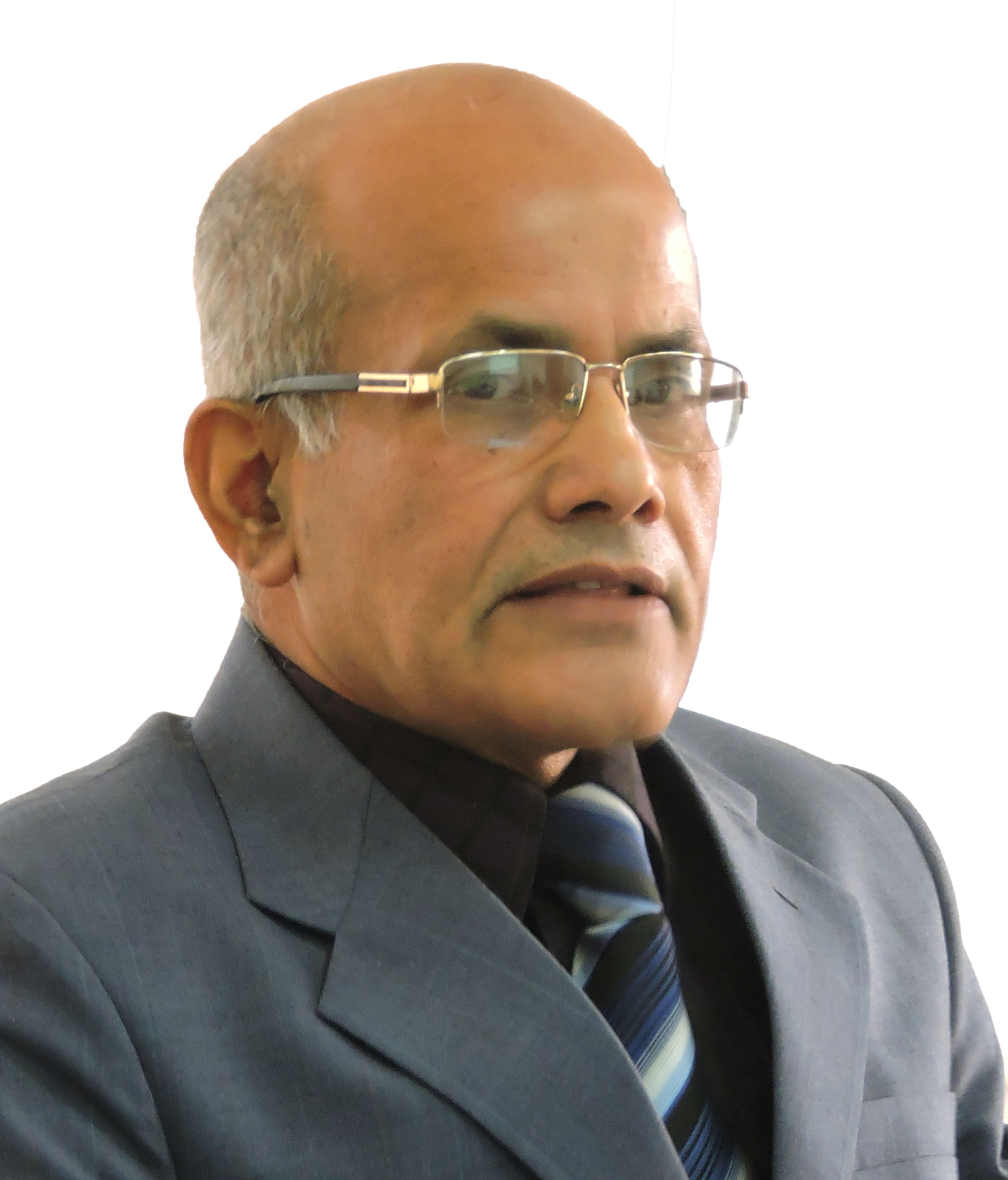The deadly earthquake of 6.4 magnitude on the midnight of November 3, 2023 that caused massive human causalities and destruction of property in the western hilly region of Nepal, had its epicenter in Jajarkot and West Rukum districts, nearly 500 kilometers west of Kathmandu. It rocked most parts of Nepal and different parts of India including Delhi.
Estimates are that at least 154 people were killed and over 300 people were injured during the quake. Property worth billions of rupees turned into rubble within the twinkling of an eye. As many as 26,557 houses were completely destroyed; while 35,455 houses were partially damaged. Unsafe weak structures of the houses were the main factor that led to so much of human causalities and destruction of the property.
To ensure rescue operations effectively, teams of the Nepali Army, Nepal Police and Armed Police Force were mobilized in Jajarkot and West Rukum. Medical teams were dispatched there. Nepal’s Home Ministry sent initial emergency relief assistance to the earthquake survivors under the one-door policy in coordination with the local level units. The district disaster management committee claimed that it provided relief materials to the genuine earthquake victims as per their requirements.
The government of Nepal decided to provide free treatment to those who ultimately succumbed to injuries during the earthquake. It also decided to provide INR 125,000 to families in which someone was killed during the earthquake. To enable those who became homeless due to the earthquake, the government decided to provide assistance of INR 31,250 to buy corrugated zinc sheets for setting up temporary shelters.
Amidst such moments of grief, various countries expressed deep sympathy over the devastations caused by the earthquake in Nepal. Apart from the Communist Party of China (CPC), the Republic of Korea and quite a few other countries sent humanitarian assistance to the quake-affected survivors. Millions of rupees were deposited in the Prime Minister Disaster Relief Fund to provide relief support to families of the victims.
The Indian Prime Minister, Narendra Modi, expressed his commitment to provide all possible support to the earthquake-affected population of Jajarkot and West Rukum. Accordingly, India sent to Nepal 33 tonnes of emergency relief materials including tents and tarpaulin sheets, blankets, sleeping bags, vital medicines and medical equipment like portable ventilators, hygiene materials, etc. Even during the most deadly earthquake in 2015, India was the first country to send its rescue teams and relief materials to Nepal just within a few hours for the catastrophe.
However, reports coming from the field in Jajarkot and West Rukum districts confirm that many of the earthquake survivors are still struggling for their lives. The menstruating women and children are living in panic due to lack of toilets, water and sanitation-related materials. Worse is the situation of the women who are forced to give birth to the babies under makeshift tarps. Miseries of several people have multiplied as they are forced to live under the open sky despite the chilly cold and rainfall in the area. Reportedly, four persons breathed their last due to the severe cold in the region.
During the aftershocks of the earthquake, psychological trauma among the people has started growing. Until November 10, 483 aftershocks were recorded in the region. The risks of outbreaks of cold-related ailments, waterborne diseases and vaccine-preventable diseases are on the rise. Also rising is the risk of vector-borne diseases like malaria, dengue, kala-azar, etc. in the area.
It is also learnt from the ground report that many of the needy people in the earthquake-affected areas are still deprived of relief materials. Because of favouritism, relief materials are being distributed unequally among the people. Materials meant for the quake-affected people are being diverted to other areas at the whims of certain influential politicians. Quake survivors in the accessible areas are served better as compared to those living in remote corners. The lack of vehicles and funds for transportation of relief materials and lack of an effective monitoring and supervision system are also a problem. There is no proper coordination between the federal, provincial and local bodies in the matter of distribution of relief materials. Therefore, the National Human Rights Commission of Nepal has expressed serious concern for these untoward developments in the affected areas.
In recent years, seismic activity has grown in the Himalayan region. Studies conducted in the past reveal that there is a greater risk of earthquakes in the settlements situated in the hills and mountainous areas as compared to the plains. In the month of October’23, many people were injured when an earthquake of 6.3 magnitude had jolted the Bajhang district in western Nepal. Earlier, in November 2022, a 6.6 magnitude earthquake in the Doti district killed 6 people. Before that on April 25, 2015, the 7.8 magnitude earthquake killed more than 9,000 people and injured 22,309 people in the country. Within a month thereafter in the month of May, the 7.3 magnitude earthquake had created further chaos in the nation.
Though Nepal is prone to earthquakes and more and more earthquakes have been occurring in recent years, especially in the Himalayan region, Nepal does not seem to have made adequate preparations in terms of strengthening rescue teams, supply of relief materials and providing psycho-social counselling to the target groups. It seems as if the country has not learnt enough lessons from the 2015 deadly earthquake or even other earthquakes that occurred afterwards.
Of course, it is not possible to control such natural calamity as an earthquake, but it does not mean that human causalities, apart from the damage or destruction of the property, cannot be mitigated if due preparations are made in advance. For this, what is needed most is to focus on constructing earthquake-resistant houses and public buildings, apart from preparing effective rescue teams, supplying relief materials, and making arrangement for psycho-social counselling to the target groups in time. Self-dependence rather than dependence on foreign sources in some of these areas are needed to be able to achieve self-sufficiency and to eliminate anomalies whatsoever in the distribution of relief materials.
(The paper is the author’s individual scholastic articulation. The author certifies that the article/paper is original in content, unpublished and it has not been submitted for publication/web upload elsewhere, and that the facts and figures quoted are duly referenced, as needed, and are believed to be correct). (The paper does not necessarily represent the organisational stance... More >>
Image Source: https://give2asia.org/wp-content/uploads/2023/11/Nepal-Earthquake_AFP.jpeg










Post new comment